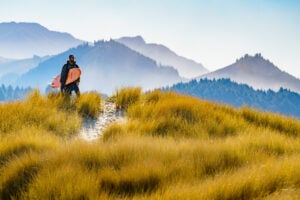
03.15.21
Civic Engagement Brown Bag Session 3: Storytelling with Photography, Featuring Ben Moon
By bgoodwinHow can we get people to pay attention to our stories? What is it that draws people in? Often times a single image can tell a story, make a connection, and hold power of persuasion like nothing else.
For our third Civic Engagement Brown Bag Session, we focused on Storytelling with Photography featuring special guest Ben Moon. Not only is Ben a world class photographer and film maker, he is also the Vice Chair of our very own Three Capes Surfrider Chapter. Although Ben never planned on being a photographer nor had formal training, through is natural eye, study of library books, and hard work he been able to shoot photos for companies such as Patagonia for the past 20 years. What began as documenting his obsession with climbing has turned into a diverse portfolio of work, spanning continents and cultures. Although he switched to digital in 2005, he is grateful he started with film as it taught him to "really see things." Follow @ben_moon on Instagram and check out his poignant memoir, Denali.
"The beautiful thing is I never planned on photographing for a living. It’s a hustle, lots of work behind the scenes and editing and breaking through the creative ruts. But doing what you love is great."
For those of us who are more casual photographers and are looking to increase the impact of our images, Ben is full of sage advice. Read below for some of his tips and scroll to the bottom of the post for the full Zoom recording.
On Crafting an Image
*Use leading lines to draw the viewer into the focal point of an image. Look for lines such as the edge of the shore, a building or someone's arm and frame your photo around that line. One of the most common mistakes is try to capture too much and not focus on one thing. Leading lines give a sense of place and perspective and work to pull you into an image. It’s not about shooting a portrait straight on, but it’s about pulling someone into the photo.
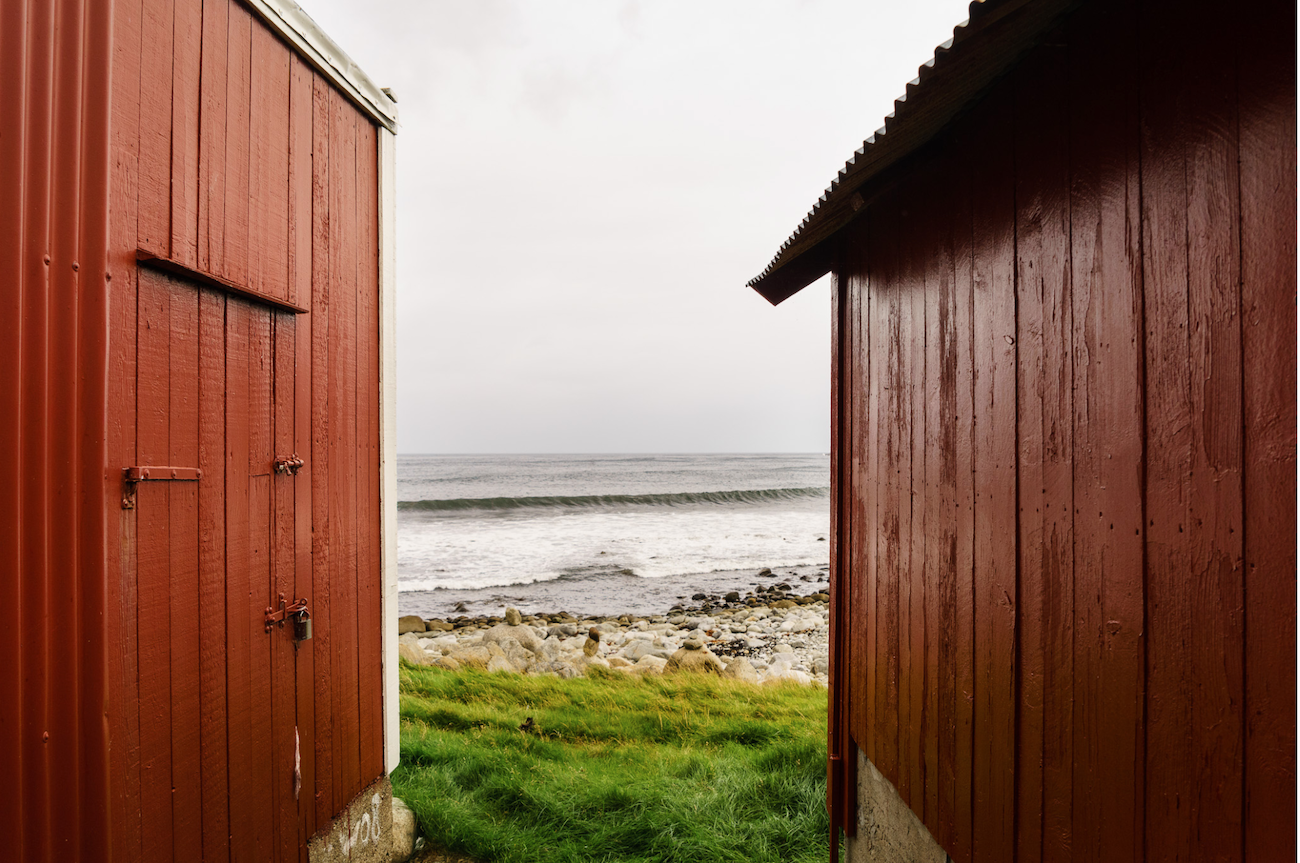
*Use the rule of thirds, a type of composition in which an image is divided evenly into thirds, both horizontally and vertically (imagine a tic-tac-toe board), and the subject of the image is placed at the intersection of those dividing lines, or along one of the lines itself.
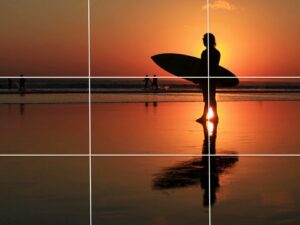
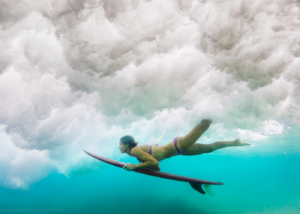
*Play with perspective by trying to find an unexpected angle. Try getting down low and placing the camera on the ground so the lens is looking up. Play with focusing on something small in the foreground, such as micro-plastics at the tide line.
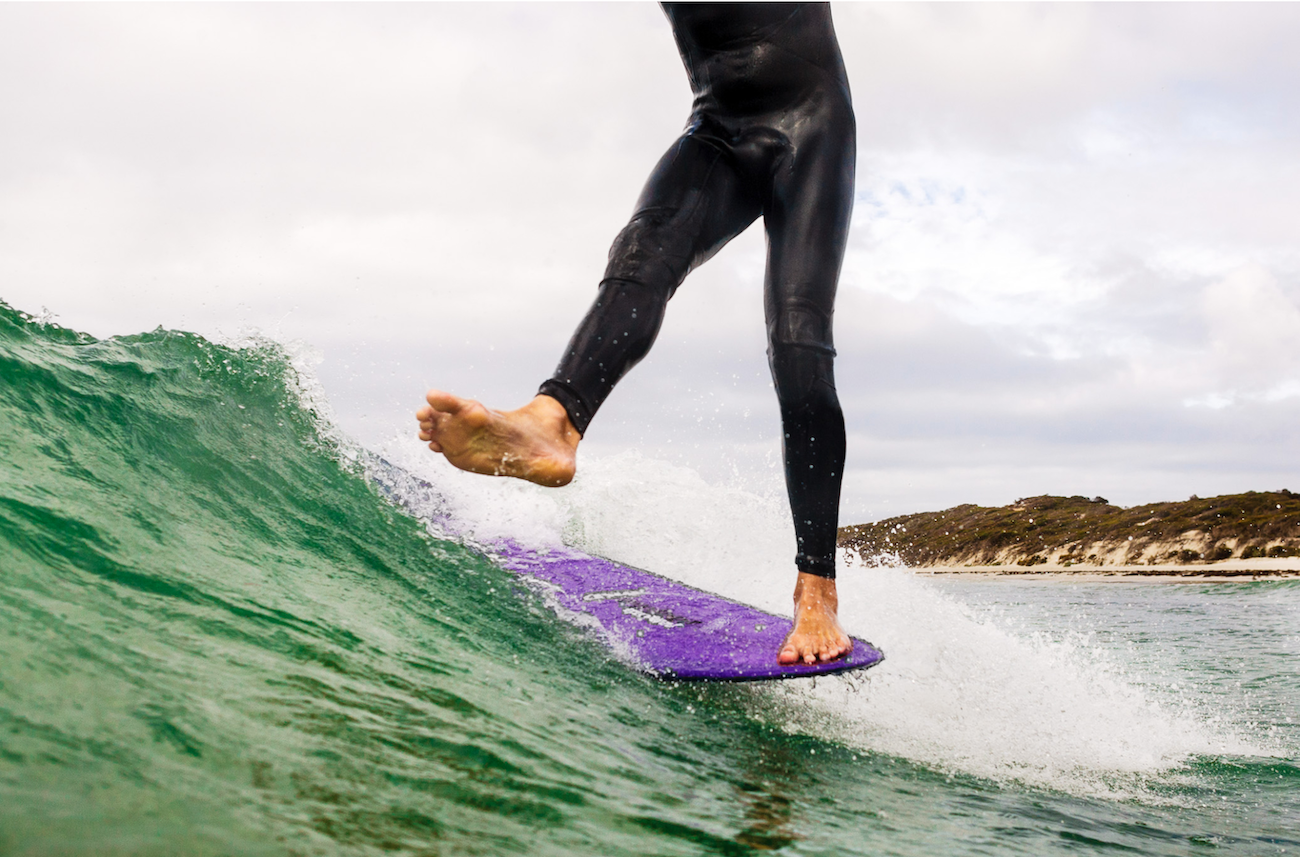
*Try creating detail shots which can tell a story without showing the whole person or object.
*Snap lots of pictures to get candid moments. The great thing about digital is it's not expensive to keep taking photos! Sort through later to find the winning shot.
*Don't be afraid of taking bad photos! They are part of the process.
On Using Phones for Photography
*Although Ben has a variety of cameras, he shoots with his iPhone 70% of time anyway and is blown him away how powerful that tool can be. He advises not to get too hung up on gear. It’s all about eye and perspective and how you see the world. If you're the only one there to capture the moment, that’s what you have.
*Smart phones can allow you to magnify images, do slow-motion, wide-angle and time lapse. There are intricate editing capabilities on your phone. Have fun playing around with different levels such as vibrance and saturation. Ben suggests editing your photo, then stepping away for awhile before coming back to it. Look at your photo with fresh eyes to make sure you didn't over-do it! Also beware of editing at night if your screen is in night mode. The image will look different in the day time!
*There's also very sophisticated apps to improve your images. Ben likes playing around on Snapspeed. The key is to not overdo it. If you go too far with HDR, the image won't look real. He recommends editing enough to focus on what your eye saw, but not more.
On Social Media
*Now with social media "stories" and sharing on Instagram in a playful way, it’s fun to not have to be so perfect.
*"It’s not about equipment, it’s about story. What are you trying to say? What’s the point? Alway ask "Why?" What’s motivation and subject? You start to compile footage, and see the story."
On Photography in the Pacific Northwest
*In PNW, on a cloudy or rainy day, it’s actually one of the best filters we have. Beautiful light is a great opportunity. Right after a rain or on overcast days it’s great because shadows aren’t as harsh. In Southern California, they often have to diffuse the light with tools, but in Oregon, we often have naturally diffuse light.
*Having a great background is key. In Oregon, we have so many beautiful and iconic backdrops, so make sure to include one in your photo.
On Photographing People
*You should always ask people if they are comfortable being in your photo. Most people respond positively. Ben finds that especially now that people's lives are much more documented, they are used to it and only 1% might say no. You might even make a friend or ally in the process!
*If it's for a larger campaign, make sure not to include faces in the photo if they have not signed a release form. You don't need a release if the image of someone is not recognizable. Ben notes that most street photographers have never had a release form...just make sure you are not using someone for a stance that is against their will!
On Shooting from a Boat, On Water and Into the Sun
*If shooting from a phone, use a stabilizer. There are options to download apps that sync the stabilizer to your phone. Just make sure you have a dry bag or something to protect the gear. Stabilizers are not really waterproof. They used to cost so much, now can just grab one and use it. It’s phenomenal. And then you can edit on your phone too. The possibilities are endless!
*If you put camera in slow motion mode on water moving past a boat, it is so dreamy. Water at sunset has universal appeal.*Around water, a polarizing lens will do wonders for decreasing reflections and will help deepen colors. Shooting at high noon with polarizing sun glasses works well. You can even put polarized glasses in front of camera for a short-cut option!
*Glare from the sun can be really beautiful with certain lenses, but some lenses don’t look great. Try to hide the green dot when shooting into the sun. Anytime when shooting into sun, try to block flare out with hand kind of like a lens shroud. Also, watch your shadow and that it’s not in the photo. If you are shooting people or object, you can duck down and make a highlight around them. You can get the sun to flare off of just one side and it can be beautiful.
"There's really no rules... you can break them all the time!"

